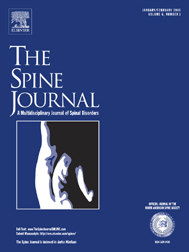
Spine
Statistical, but not clinically relevant, differences of TDR vs multidisciplinary rehab for cLBP
Spine J. 2017 Oct;17(10):1480-1488173 patients with chronic low back pain due to single-level lumbar degenerative disease were randomized to either total disc replacement or a multidisciplinary rehabilitation program. Patients were followed up for 8 years after treatment for outcome on the Oswestry Disability Index (ODI), as well as pain, quality of life, occupational status, satisfaction, drug use, complications and additional back surgery. After 8 years, the mean improvement in ODI score from baseline significantly favoured TDR over MDR in both intention-to-treat and per-protocol analyses, though the size of the difference between groups was suggested to be below a clinically important difference threshold of 10 points.
Unlock the full article
Get unlimited access to OrthoEvidence with a free trial
Start TrialCritical appraisals of the latest, high-impact randomized controlled trials and systematic reviews in orthopaedics
Access to OrthoEvidence podcast content, including collaborations with the Journal of Bone and Joint Surgery, interviews with internationally recognized surgeons, and roundtable discussions on orthopaedic news and topics
Subscription to The Pulse, a twice-weekly evidence-based newsletter designed to help you make better clinical decisions
Exclusive access to original content articles, including in-house systematic reviews, and articles on health research methods and hot orthopaedic topics
Or continue reading this full article
Register Now

Subscribe to "The Pulse"
Evidence-Based Orthopaedics direct to your inbox.




































